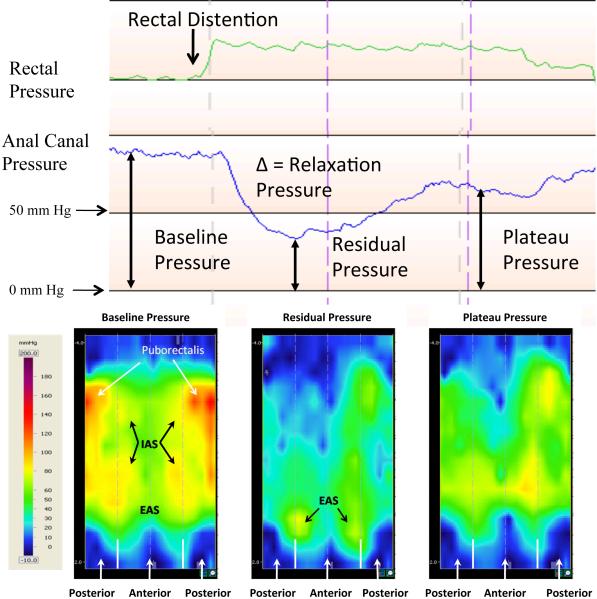Figure 1.
The top panel shows a continuous recording of the rectal and anal manometric pressure sequences after a 70 cc rectal distention induces RAIR in one subject. The lower panel shows the topographic pressure map of the anal canal during the baseline, residual, and plateau pressures. The top panel exhibits the rise in rectal pressure with distention, the reflexive relaxation of the anal canal, and its partial recovery of pressure. The puborectalis, IAS, and EAS high pressure zones are marked in the baseline pressure map in the lower panel. The IAS provides pressure in the anterior and posterior superior anal canal, while the puborectalis in just the superior posterior anal canal. The pressure map at the residual pressure indicates a decrease in pressure at the puborectalis and IAS zones, with the EAS zone still providing anal canal pressure. The plateau topographic pressure map indicates a partial return to the baseline pressures in the IAS and puborectalis regions.

